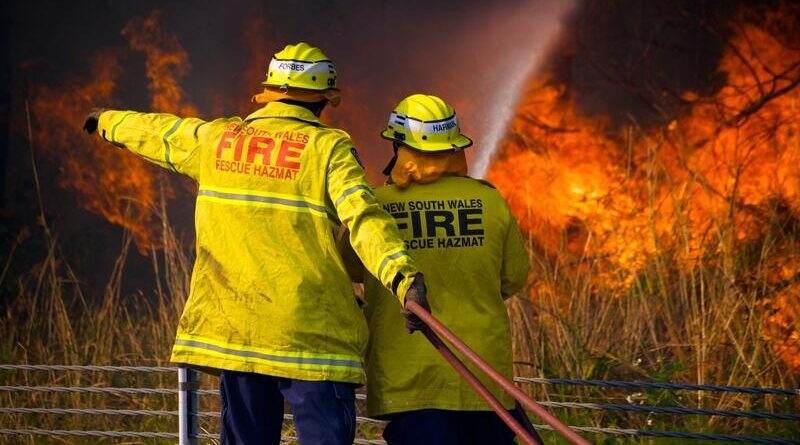Essential Community Preparedness for Bushfire Seasons
As climate change exacerbates the frequency and severity of bushfires, the importance of community preparedness cannot be overstated. This comprehensive guide outlines practical steps communities can take to mitigate bushfire risks and enhance resilience, ensuring that when bushfires occur, the impact on lives and properties is minimised.
Understanding the Risk
The first step in preparing for bushfire season is understanding the specific risks your community faces. This involves identifying the types of vegetation in the area, prevailing weather conditions, and historical data on bushfires. Local fire authorities often provide bushfire risk assessments and maps that highlight high-risk zones. These resources are invaluable in planning and preparing for potential emergencies.
Developing Community Plans
Effective community preparedness starts with a well-structured plan that involves all stakeholders, including local government, emergency services, community leaders, and residents. This plan should detail the roles and responsibilities of everyone during a bushfire, including communication strategies, evacuation routes, and emergency shelter locations. Regular community meetings to review and update the plan are crucial, ensuring that new members are informed and adjustments are made as conditions change.
Enhancing Structural Resilience
Communities can significantly reduce bushfire risks by adopting fire-smart building and landscaping practices. This includes:
Fire-resistant Building Practices
Utilising materials such as treated timber, fire-retardant roofing, and non-combustible cladding can help structures withstand the onset of bushfires. New construction and renovations should adhere to updated building codes that emphasise bushfire resilience.
Strategic Landscaping
Effective landscaping practices are essential in managing bushfire risks. This includes creating firebreaks and choosing plants that are less flammable. Regular maintenance to remove dead leaves, debris, and other flammable materials from around buildings also plays a critical role.
Infrastructure Resilience
Ensuring that infrastructure such as roads, bridges, and public utilities can operate under fire conditions is vital. Plans for bushfire resilience should include routes for emergency vehicles and evacuation paths that are clearly marked and well maintained.

Implementing Early Warning Systems
A robust early warning system is essential for effective bushfire response. This includes:
- Integration of Technology: Leveraging advanced technologies like satellite monitoring, predictive analytics, and automated alert systems can provide early warnings to residents. These systems should be tested regularly to ensure they function correctly when needed.
- Community Training and Drills: Regular drills and training sessions help prepare residents for the actual event of a bushfire, making it crucial for them to understand how to respond to alerts quickly and efficiently.
Building Community Cohesion
A cohesive community is more resilient in the face of disasters. Establishing and supporting local networks such as neighbourhood watch groups or community response teams can enhance preparedness and response capabilities. These groups can:
- Resource Management: Community-led initiatives to manage resources such as emergency shelters, food supplies, and water can greatly enhance survival rates during bushfires. Establishing designated responsible parties for these resources ensures organisation and accessibility.
- Support for Vulnerable Populations: Plans need to specifically address the needs of the elderly, disabled, and children. This may include personalised evacuation plans or special assistance programs during emergencies.
- Information Sharing: Maintaining open channels of communication is essential. This can be facilitated through social media, community bulletin boards, and regular meetings to keep everyone informed about potential risks and the latest preparedness strategies.
Regular Training and Drills
Frequent training and drills reinforce emergency procedures and ensure everyone knows what to do when a bushfire threatens. This should include:
- Simulation Exercises: Conducting simulated bushfire scenarios can test the community’s response strategies and improve them by identifying weaknesses.
- Educational Workshops: Workshops on bushfire safety, first aid, and emergency response should be accessible to all community members. These workshops are crucial for building knowledge and confidence among residents.
Collaborating with Local Fire Authorities
Strong collaboration with local fire authorities can provide communities with expert guidance and support. Fire authorities can offer:
- Collaborative Planning: Working together to develop and refine bushfire management plans ensures that community efforts are aligned with professional strategies and resources.
- Access to Expertise and Resources: Fire authorities can provide specialised training, equipment, and support that enhance the community’s ability to prepare for and respond to bushfires.
Final Thoughts
Community preparedness for bushfire seasons is a continuous process that requires the involvement and commitment of the entire community. By understanding the risks, developing strategic plans, enhancing structural resilience, implementing early warning systems, building community cohesion, conducting regular training, and collaborating with local authorities, communities can significantly mitigate the impacts of bushfires. As the threat of bushfires grows with climate change, so does the importance of being well-prepared, ensuring that communities are not only ready to face these challenges but also equipped to recover and thrive afterwards.


Pingback: where to buy rybelsus
Pingback: clomid cost
Pingback: generic viagra 50mg
Pingback: viagra 25mg price in india
Pingback: cialis pastilla
Pingback: benefits of ginseng root for men over 40
Pingback: 50 mg viagra cost
Pingback: figral sildenafil 100mg
Pingback: 50 mg of viagra
Pingback: cialis 20mg price
Pingback: coupons for cialis